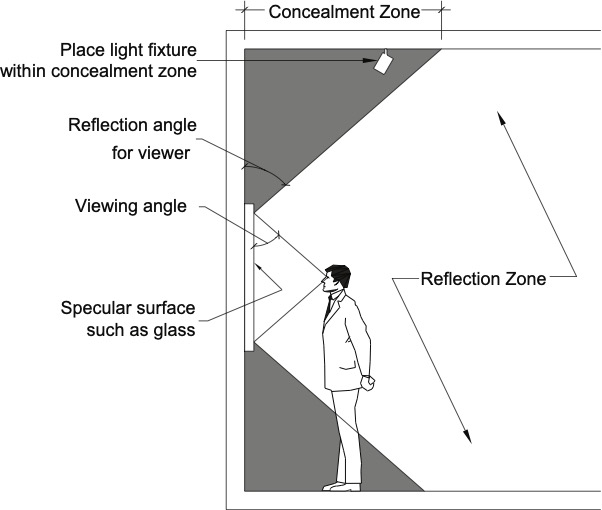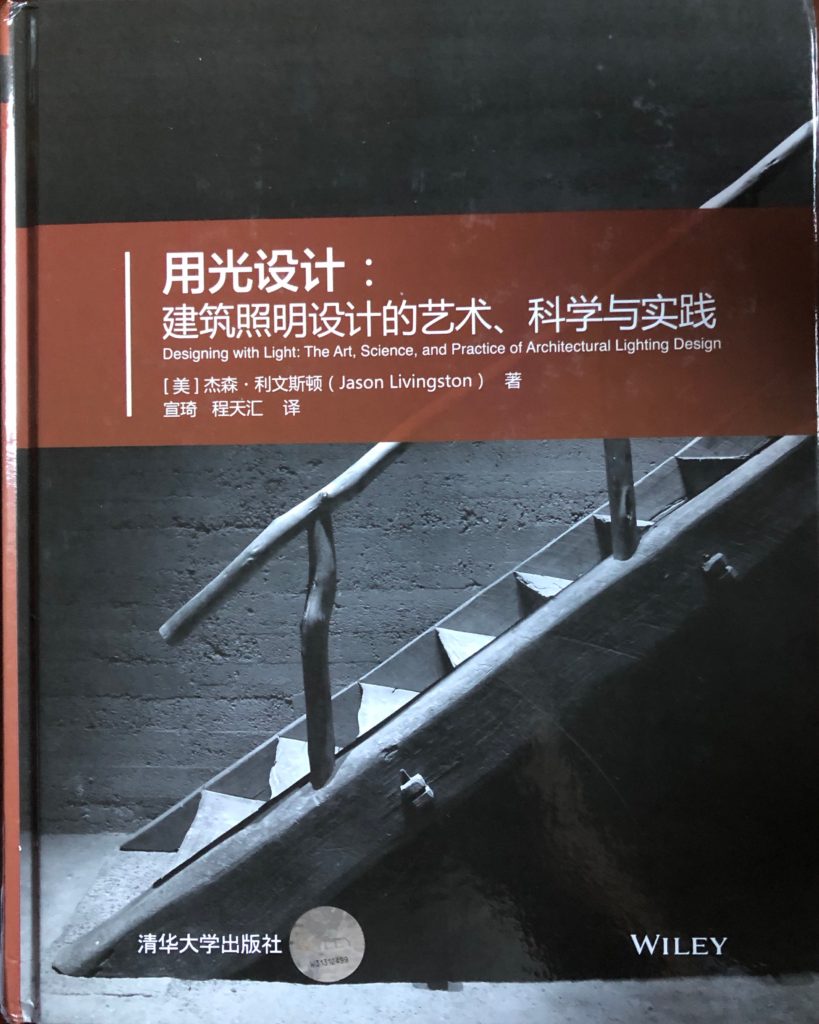Tom Butters, the Founder and Executive Director of The Lighting Agora (full disclosure: I’m a member) was recently interviewed by LightNOW. You can read it here: Interview: Tom Butters On The Lighting Agora | LightNOW
Tom Butters, the Founder and Executive Director of The Lighting Agora (full disclosure: I’m a member) was recently interviewed by LightNOW. You can read it here: Interview: Tom Butters On The Lighting Agora | LightNOW
Last week I was in Boston and wanted to visit the USS Constitution. The ship was closed but the visitors center was open. When I went inside and tried to read the exhibit signage, here’s what I saw:
Track lights were positioned right over the semi-gloss signs, creating terrible reflected glare. The thing is, this is so easy to avoid. In fact, someone almost has to try to create lighting this bad. Here’s how to avoid it.

Over the past few months I’ve had a manufacturer, a sales rep, and a lighting designer all tell me they think CRI compares a light source to daylight. When I tried to correct one of them the reply was an acknowledgment that an incandescent source is normally used, but daylight can be used, too. Given that the lighting industry has been using CRI since 1965, all three should have known better. On the assumption that they’re not alone in their misunderstanding, let’s talk about reference light sources.
The International Commission on Illumination (CIE for Commission Internationale de l’Eclairage) and the Illuminating Engineering Society (IES) both define color rendering as, “The effect of an illuminant on the color appearance of objects by conscious or subconscious comparison with their color appearance under a reference illuminant.” In other words, we evaluate the color rendering of a given light source by comparing it to another light source. The other light source is called the reference illuminant.
In 1965 the CIE published CIE 13 Method of Measuring and Specifying Colour Rendering Properties of Light Sources. The current version is CIE 13.3-1995. Its General Color Rendering Index, Ra, is usually referred to as CRI. CIE 13.3 says, “the reference illuminant for light sources with correlated colour temperatures below 5000 K shall be a Planckian radiator, and from 5000 K one of a series of spectral power distributions of phases of daylight.”
So, the reference illuminant must have the same color temperature or correlated color temperature (CCT) as the light source being tested. For all light sources with a CCT below 5000 K we use the spectrum of a Plankian, or blackbody, radiator. For all light sources with a CCT of 5000 K or above we use a CIE model of daylight, again at the same CCT as the light source we’re testing.
Regular readers of this blog know that I’m not a fan of CRI, greatly preferring the increased accuracy and depth of information provided by ANSI/IES TM-30 IES Method for Evaluating Light Source Color Rendition. What about TM-30’s reference light source? It’s nearly the same. For CCTs of 4000 K and below it’s a Plankian radiator. For CCTs of 5000 K and above, it’s the CIE model of daylight. TM-30 avoids CRI’s sudden jump between reference illuminants by using a graduated blend of Plankian radiator and daylight over the range of 4001 to 4999 K.
CIE 224 Color Fidelity Index for Accurate Scientific Use is identical to TM-30’s Fidelity Index (Rf) and uses the same reference light sources.
Designing With Light is now available in Simplified Chinese!

Here’s this semester’s back to school video. This time it’s Kylie Minogue in a concert performance of Light Years.
This is an interesting article about the state of 3-D printing for construction and a look at a couple of recent projects. It’s well worth the time.
Source: How 3-D Printing Could Break into the Building Industry – Scientific American
It’s time for the back to school music video about (sort of) light. So here’s The Doors on a set made of Doors(!) singing Light My Fire. Is that Andy Kaufman in the background?
Unfortunately, either GoDaddy or WordPress has done something dumb and I can’t insert a video. Go here now!
The IES is about to release an update to TM-30 (TM-30–18). Along with the updated version they have released this Position Statement.
Source: PS-11-18: IES Position on TM-30-18, IES Method for Evaluating Light Source Color Rendition | IES
This semester’s back to school music video
00
The linked article is on the web site of the IALD and concerns Louisiana State House Bill 748 which would prohibit the use of the terms “registration” and “certification” for nongovernmental professional credentialing. The problem for lighting designers is that it would mean we couldn’t say that we were Lighting Certified (LC) by the NCQLP or that we were a Certified Lighting Designer (CLD).
No doubt there are other professions that would also be harmed by the bill. The next vote is scheduled for May 9th. If you want to let them know what a bad idea this is, contact the bill’s sponsor Julie Emerson.
Source: IALD – News – International Association of Lighting Designers